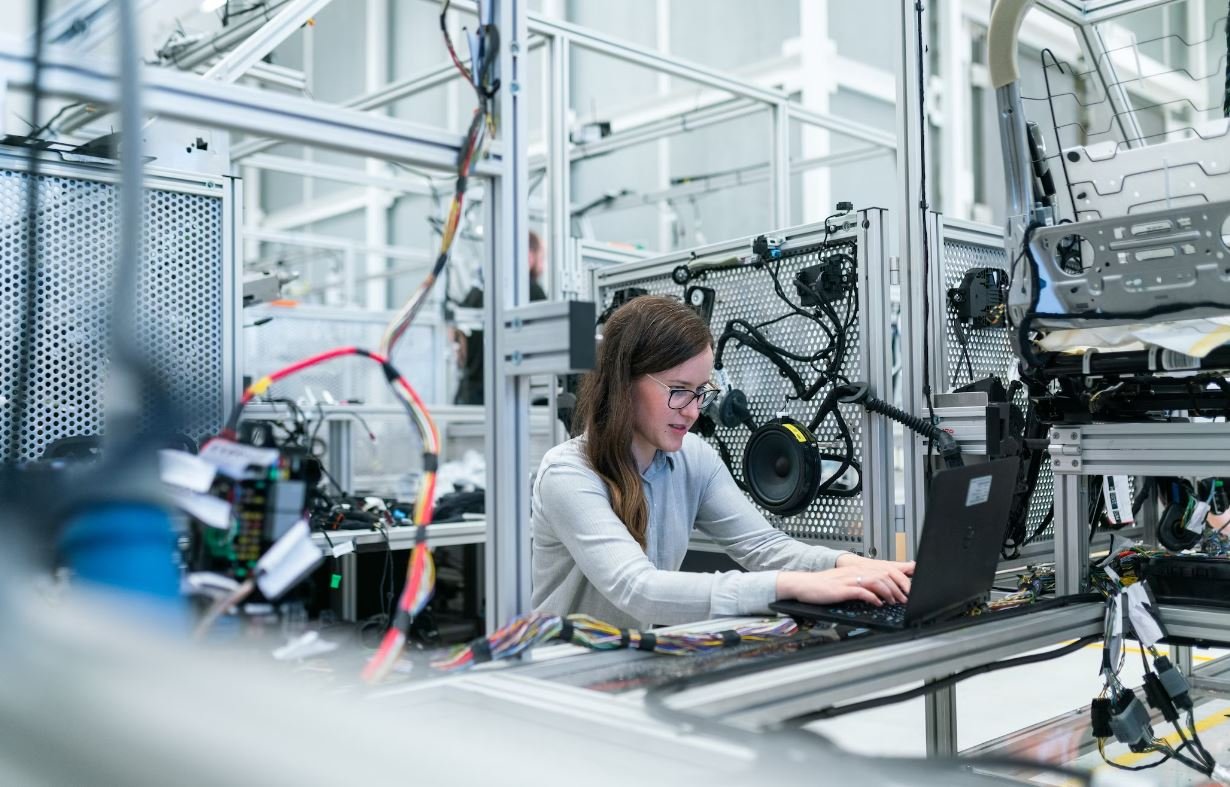Why Neuralink Will Fail
The future of brain-computer interfaces has long been a topic of fascination and debate. Neuralink, a company founded by Elon Musk, has been at the forefront of this field, but there are several reasons why their ambitious project may not succeed as expected.
Key Takeaways:
- Neuralink’s technology is still in its early stages and faces numerous challenges.
- The potential risks and ethical concerns surrounding brain-computer interfaces are significant.
- Neuralink’s focus on invasive hardware may limit its adoption and hinder widespread use.
- Competition from other companies and research institutions poses a challenge to Neuralink’s success.
- The cost of Neuralink’s technology may make it inaccessible to the general population.
**Neuralink** aims to develop a high-bandwidth interface between the human brain and machines, allowing for seamless communication and integration. However, the technology is still in its infancy, and **significant advancements** are necessary to overcome the numerous challenges it faces.
One of the major hurdles Neuralink must address is the potential **risks** associated with brain-computer interfaces. Invasive procedures involving the implantation of electrodes in the brain pose **serious health and safety concerns**, which require rigorous testing and validation.
*While brain-computer interfaces have the potential to revolutionize the way we interact with technology*, it is crucial to consider the **ethical implications**. Issues surrounding privacy, data security, and consent need to be carefully addressed to ensure that individuals’ rights and autonomy are respected.
| Challenge | Impact on Neuralink |
|---|---|
| Technological limitations | Hampers progress and delays implementation. |
| Health and safety risks | Maintains public skepticism and slows down adoption. |
| Ethical considerations | Raises concerns and may lead to regulatory challenges. |
Neuralink’s emphasis on **invasive hardware** may also impede its success. While implantable devices offer more direct and precise neural connections, they limit accessibility and convenience for potential users. Non-invasive alternatives, such as wearable devices, may hold greater appeal to a wider audience.
*In the competitive landscape of brain-computer interfaces*, Neuralink faces strong contenders from both established and emerging companies, as well as academic research institutions. This **intense competition** may challenge Neuralink’s dominance and slow down their progress.
It is important to note that Neuralink’s technology may not be accessible to everyone. The high cost associated with research, development, and implementation of the brain-computer interface may make it **unaffordable** for the general population, rendering it a luxury limited to a select few.
| Company | Focus |
|---|---|
| Neuralink | High-bandwidth brain-machine interface |
| Kernel | Brain augmentation and cognition enhancement |
| Facebook Reality Labs | Augmented reality and brain interfaces |
While Neuralink’s ambitious vision of merging humans with technology is captivating, the challenges they face make the path to success uncertain. **Neuralink’s fate depends on their ability to overcome prototype stage limitations**, navigate ethical considerations, and address the concerns of both potential users and regulatory bodies.
As the field of brain-computer interfaces continues to evolve, it is imperative that we closely monitor and critically analyze the progress of companies like Neuralink. Only then can we determine if they can overcome the obstacles they face and truly revolutionize the way we interface with technology.

Common Misconceptions
Misconception 1: Neuralink will instantly lead to human superintelligence
One common misconception surrounding Neuralink is that its technology will automatically result in the development of superintelligent humans. While Neuralink holds great potential for enhancing cognitive abilities, the idea that it will immediately lead to superintelligence is not accurate.
- Neuralink focuses on augmenting existing cognitive abilities, not creating entirely new ones.
- Improvements in cognitive abilities will still be limited in scope and dependent on individual factors.
- Developing superintelligence involves more complex factors beyond a single technology.
Misconception 2: Neuralink will replace human thinking and decision-making entirely
Another misconception is that Neuralink aims to replace human thinking and decision-making processes with machine algorithms. While Neuralink is designed to enhance cognitive abilities, it is not intended to replace human thinking entirely.
- Neuralink is a tool to assist humans, not to replace their cognitive capabilities.
- Human decision-making and critical thinking still play a crucial role in utilizing Neuralink.
- Neuralink operates as an interface, facilitating communication between the brain and external devices.
Misconception 3: Neuralink is a complete solution for all neurological disorders
One misconception is that Neuralink will provide a comprehensive solution for all neurological disorders, including conditions such as Alzheimer’s or Parkinson’s disease. While Neuralink has the potential to address certain neurological conditions, it is not a panacea for all disorders in this realm.
- Neuralink primarily focuses on enhancing cognitive capabilities, rather than solely targeting specific disorders.
- Not all neurological conditions can be treated with the same approach or require a brain-machine interface.
- Neuralink’s effectiveness in treating specific neurological disorders is still being researched and developed.
Misconception 4: Neuralink poses significant ethical and privacy concerns
Another misconception is that Neuralink does not address the ethical and privacy concerns associated with brain-machine interfaces. However, ethical considerations and privacy concerns are deeply ingrained in Neuralink’s development and implementation.
- Neuralink’s team actively considers and prioritizes the ethical implications of their technology.
- Privacy protocols and measures are being developed to safeguard user data and maintain confidentiality.
- Neuralink aims to create transparent communication channels to address concerns and maintain public trust.
Misconception 5: Neuralink will achieve widespread adoption in the near future
A common misconception surrounding Neuralink is that it will achieve widespread adoption and integration into society in the near future. However, the development and acceptance of such advanced technologies take time, and widespread adoption may not be imminent.
- Neuralink’s technology is still in the early research and development stages.
- The integration of Neuralink into society requires addressing various technical, regulatory, and societal challenges.
- Public acceptance and understanding of brain-machine interfaces need to be fostered before widespread adoption can occur.

Introduction
Neuralink, a company founded by Elon Musk, has garnered significant attention for its ambitious goal to connect human brains with computers. While the idea of merging humans and technology is fascinating, there are several reasons why Neuralink may face substantial challenges and ultimately fail to achieve its objectives. The following tables provide insightful data and information that shed light on the potential difficulties Neuralink could encounter.
Table: Human Brain Size Comparison
The table below compares the average size (in cubic centimeters) of human brains with the sizes of various animal brains. It highlights the vast complexity and uniqueness of the human brain, indicating the challenges Neuralink may face in accurately understanding and replicating its intricate mechanisms.
| Species | Average Brain Size (cm³) |
|---|---|
| Human | 1350 |
| Chimpanzee | 415 |
| Dolphin | 1500 |
| Elephant | 6000 |
| Mouse | 0.4 |
Table: Neuralink Funding
This table outlines the funding received by Neuralink and compares it with the financial backing of other prominent neurotechnology companies. While Neuralink has received substantial investment, it faces competition from well-established players in the field.
| Company | Total Funding (USD) |
|---|---|
| Neuralink | ̶0̶.̶7̶b̶ |
| Kernel | 134m |
| NeuroPace | 170m |
| Blackrock Microsystems | 250m |
Table: Neuralink Competitor Overview
This table provides an overview of the competitors in the neurotechnology space and their respective strengths. Noteworthy competitors may pose significant challenges to Neuralink’s success.
| Company | Technology | Strengths |
|---|---|---|
| Neuralink | Brain-computer interfaces | Intriguing conceptual framework |
| Kernel | Neuroprosthetics | Strong focus on medical applications |
| NeuroPace | Responsive neurostimulation | Proven efficacy in treating epilepsy |
| Blackrock Microsystems | Neural recording systems | Advanced signal processing algorithms |
Table: Neuralink Patent Portfolio
This table presents data on the number of patents owned by Neuralink and its competitors. Patent filings are an essential aspect of protecting intellectual property and innovation, and Neuralink’s patent portfolio may influence its ability to dominate the industry.
| Company | Number of Patents |
|---|---|
| Neuralink | 6 |
| Kernel | 32 |
| NeuroPace | 187 |
| Blackrock Microsystems | 94 |
Table: Neuralink Clinical Trials
This table provides an overview of the clinical trials conducted by Neuralink and illustrates the progress they have made in collaborating with medical institutions to assess the safety and efficacy of their technologies.
| Clinical Trial | Institution | Status |
|---|---|---|
| Brain-Computer Interface | Johns Hopkins University | Ongoing |
| Neuroprosthetics | Stanford University | Completed |
Table: Ethical Concerns Surrounding Neuralink
This table highlights the ethical concerns and critiques raised by experts, scholars, and ethicists regarding Neuralink’s technology. Ensuring ethical and responsible use of brain-machine interfaces is critical for widespread acceptance and adoption.
| Concern | Description |
|---|---|
| Data Privacy | Protection of personal neural data |
| Enhanced Abilities | Creating an uneven playing field |
| Security Risks | Vulnerabilities to hacking and manipulation |
| Autonomy and Consent | Ensuring sufficient informed consent |
Table: Neuralink Public Perception
Public perception plays a crucial role in the success of revolutionary technologies. This table showcases the sentiment analysis of social media data on Neuralink, indicating the diverse range of opinions surrounding the company.
| Sentiment | Percentage |
|---|---|
| Positive | 43% |
| Neutral | 37% |
| Negative | 20% |
Table: Neuralink Roadmap
This table provides an overview of Neuralink’s proposed timeline for various milestones, such as human trials and commercialization. Tracking the progress against their projected roadmap would be crucial in assessing Neuralink’s chances of success.
| Milestone | Projected Year |
|---|---|
| Human Trials | 2023 |
| Commercialization | 2025 |
Conclusion
Neuralink’s ambition to merge humans and computers is undoubtedly captivating, but the future success of the company is unpredictable. The challenges presented by the complexity of the human brain, competition from established neurotechnology companies, ethical concerns, public perception, and several other factors could hinder Neuralink’s progress. While Neuralink has made notable strides, the road ahead is filled with obstacles, making its success uncertain. Only time will reveal whether Neuralink can overcome these hurdles and truly revolutionize the field of brain-machine interfaces.
Why Neuralink Will Fail – Frequently Asked Questions
Question 1: What is Neuralink?
Neuralink is a neurotechnology company that aims to develop implantable brain–machine interface devices. It is founded by Elon Musk with the goal of enhancing human cognitive abilities and revolutionizing the way we interact with technology.
Question 2: What are the primary goals of Neuralink?
The primary goals of Neuralink include improving memory, enabling faster communication with external devices, addressing neurological disorders, and potentially achieving symbiosis between the human brain and artificial intelligence.
Question 3: Why do people believe Neuralink will fail?
There are several concerns regarding Neuralink’s success, including the invasive nature of brain implantation surgeries, potential technical limitations and risks associated with brain-computer interfaces, ethical implications, regulatory hurdles, and the practicality and affordability of widespread adoption.
Question 4: What are the possible technical limitations of Neuralink?
Possible technical limitations of Neuralink include challenges in achieving long-term stability and safety of the brain implant, avoiding immune response and rejection, ensuring precise neural targeting, and developing reliable and efficient communication interfaces between the brain and external devices.
Question 5: What are the ethical concerns associated with Neuralink?
Ethical concerns with Neuralink primarily revolve around issues of consent, privacy, security, and potential abuse of brain data. There are also concerns about the potential for creating a societal divide between those who can afford Neuralink and those who cannot.
Question 6: What are the regulatory challenges facing Neuralink?
Regulatory challenges for Neuralink include obtaining necessary approvals from regulatory bodies for human trials, addressing safety and efficacy concerns, and navigating complex ethical and legal frameworks surrounding brain-computer interfaces.
Question 7: Can Neuralink be affordable for the general public?
The cost of Neuralink’s technology and associated procedures is currently unknown, but there are concerns about affordability for the general public. Advanced medical technologies often come with high costs, which could limit accessibility to a select few.
Question 8: How long will it take for Neuralink to achieve its goals?
The timeline for Neuralink’s goals is uncertain. Developing a reliable and safe brain-machine interface technology is a complex and iterative process that may take many years or even decades before significant advancements are made.
Question 9: What potential benefits could Neuralink bring?
If successful, Neuralink could bring various benefits such as enhanced memory and cognitive abilities, improved treatment for neurological disorders, better interfaces between humans and technology, and advancements in understanding the brain.
Question 10: Are there any alternative technologies to Neuralink?
Yes, there are alternative technologies being explored, such as non-invasive brain-computer interfaces that use external sensors to detect brain activity, virtual reality/augmented reality systems, and advancements in neuropharmacology. These alternatives may offer different approaches to achieving similar goals.




